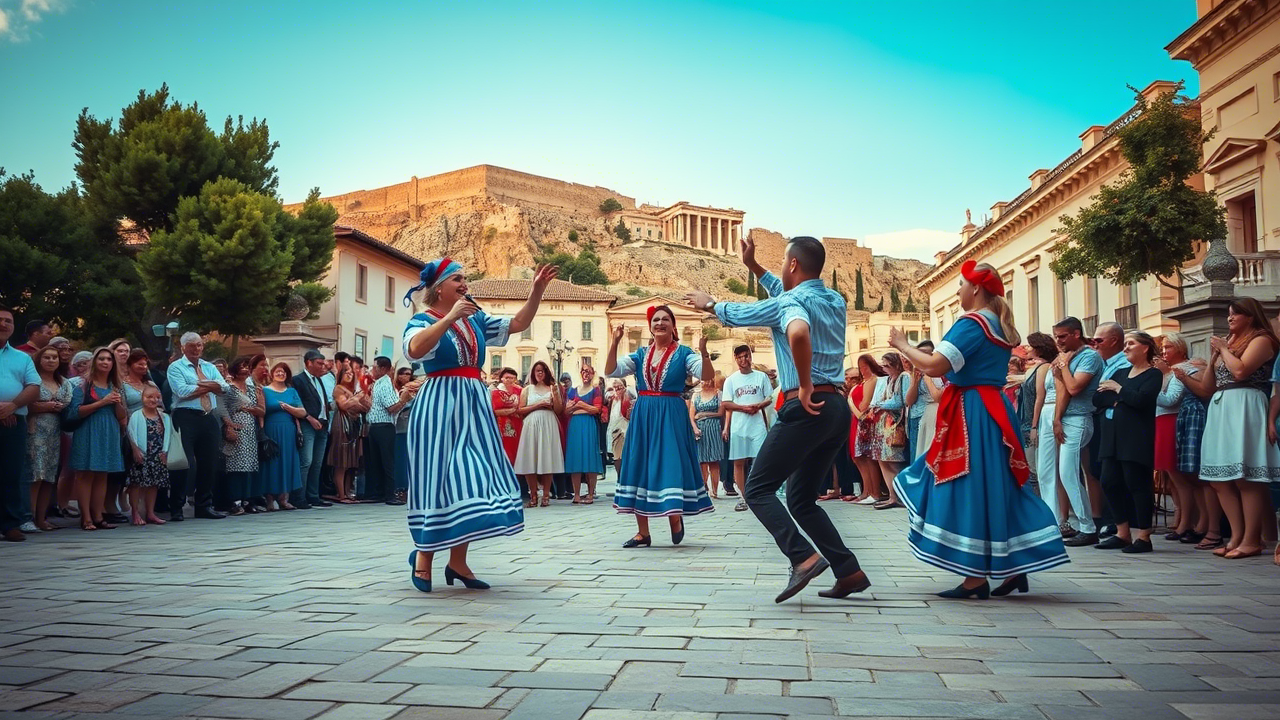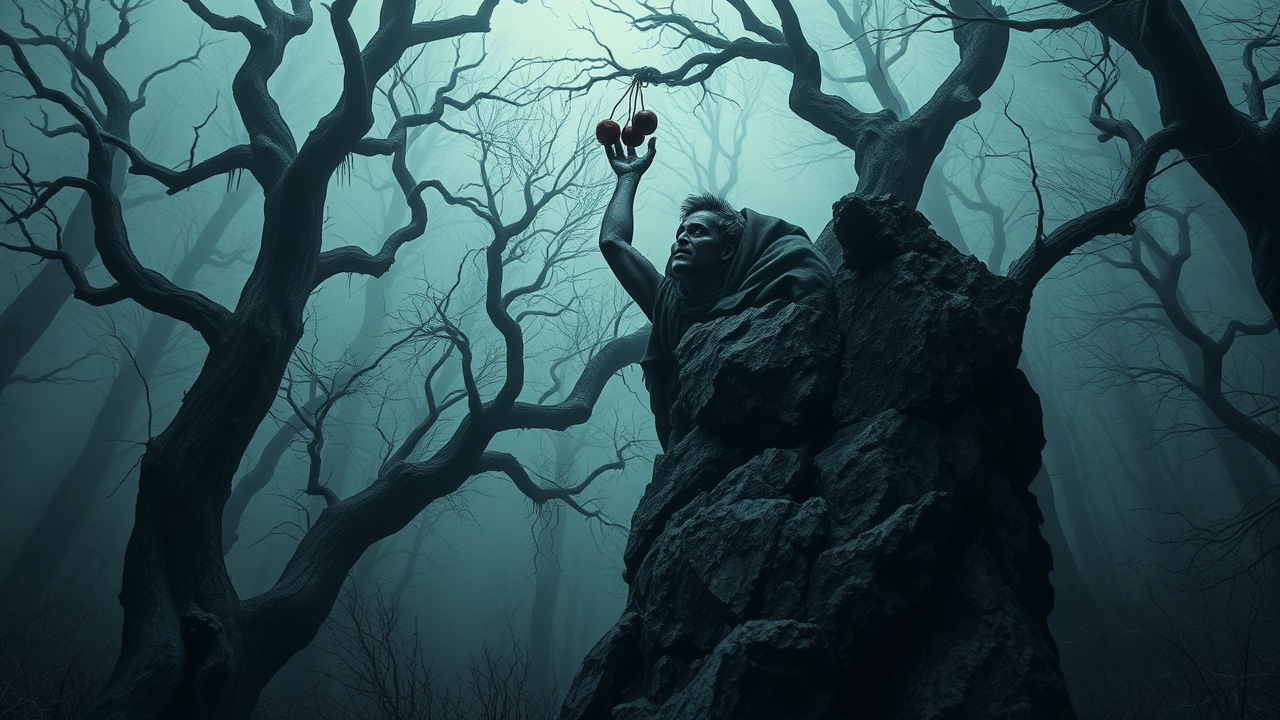In medieval times this region was so inaccessible that it was literally "agrafa" (unwritten) –imbuing its inhabitants with a wild and independent streak that continues to this day.
(Image credit: Konstantinos Lagos/Getty Images)
There is an area of Greece that is little-known and even less visited. Deep in the interior of the mainland, cut off from the rest of the world by mountains, lies the region of Agrafa.
Its name literally means "unwritten" in Greek, because when Byzantine scribes first encountered the region they found it too remote to record on their maps, marking it as agrafa – uncharted territory. The Ottomans, too, found the area too inaccessible to control, and so Agrafa became one of the very few areas of Greece that never fell under Ottoman occupation.
The Agrafiots, the resilient, independent-minded inhabitants of this region, used this quasi-independence to cultivate their land into a hub of revolutionary activity. Legendary independence fighter Antonis Katsantonis was born here, and revolutionary leader Georgios Karaiskakis used Agrafa as a base from which to terrorise Ottoman troops down in the plains.
In 1823 an Ottoman garrison, retreating from the coastal town of Missolonghi, made an ill-advised detour through Agrafa. Disorientated by the unrelenting landscape of mountains, forests and ravines, they were ambushed by a group of 800 Greek fighters who wiped them all out by the village of Agios Vlasios in one of the Greek Revolution's most celebrated battles. The Ottomans never approached the region again. A few years later, Agrafa became part of the newly independent Kingdom of Greece.
Not that independence brought much benefit to Agrafa. The region remained poor and isolated, and in the late 19th Century, many Agrafiots began to seek a better life elsewhere. Some went to the plains, others to Athens. Many took their chances in America, in particular the North Carolina city of Charlotte.
The region is often compared to Switzerland due to its idyllic scenery of lakes and mountains (Credit: Giorgos Kritsotakis/Getty Images)
"The first ever Agrafiot to migrate to America somehow ended up there," explained Elisavet Papadopoulou, my host in the Agrafa village of Fragkista. "He wrote back to his friends in the village that it was a nice place with plenty of work, and so many more followed. Now Charlotte has the biggest Agrafiot community outside of Greece."
I had arrived in Fragkista after a long and winding drive from the ski town of Karpenisi, itself a long and winding drive from Athens. There's so little flat land in Agrafa that many settlements are spread along the sides of mountains, and Fragkista is actually two villages separated by a large ravine. I was in Anatoliki (Eastern) Fragkista, while Ditiki (Western) Fragkista shimmered in the distance.
That evening in the local taverna, my ear was drawn to the table next to me where two elderly men were switching back-and-forth between Greek and American-accented English. They introduced themselves as Konstantinos "Dino" Panourgias and his brother Evangelos "Van". Dino, the elder of the two, had recently celebrated his 91st birthday.
"When I was younger, the school here had 70 students. All in one room!" said Dino. "Winters were hard. We didn't have a fireplace, just a stove. Each student would bring a log to class to burn for warmth. Now there are no students. The school closed 20 years ago."
During World War Two, the region fell to the Nazis, perhaps the first invaders to ever actually occupy Agrafa.
"They must have followed the old shepherding paths over the mountains," said Dino. "When we saw them, we all ran to hide in the caves. They stayed for two days and then burned down the village."
The 16th-Century Holy Monastery of Panagia Pelekiti is built into a cliff face in the Agrafa mountains (Credit: Dimitrios Tilis/Getty Images)
But the local resistance movement was strong and Agrafa became the first place in Greece to liberate itself from Nazi rule, proclaiming "Free Greece" from the mountains in August 1943.
But the worst was not over. Before the war had even ended, Greece descended into a vicious civil war between nationalists and communists. The events, which tore the country apart, played out on a smaller scale in Agrafa. Fragkista was no different. Here, families turned on each other and on themselves, and the village's isolation meant there was no escape from the violence. "I never met my father," said Van solemnly. "They killed him before I was born."
In 1951, a 21-year-old Dino travelled to Athens, where he caught the boat to New York and then immediately hopped on a train to – where else? – Charlotte. He worked there for a few years before moving on to Chicago and then New York, where he opened his own restaurant. In 1963, Van and their mother joined him. The brothers still live in New York but come back to spend summers at their old village. It's a paradise here, they said.
The next day I drove further into the heart of Agrafa. I passed through Ditiki Fragkista – "the posh part," scoffed Papadopoulou – which was conspicuously larger and livelier than its eastern sibling, with cafes filled with working-age folk and even a school with a few students.
Further on, the landscape became more beguiling. Below the Agrafa mountains (like the region, they were deemed too remote to name), I glimpsed Agrafa's three great rivers – the Acheloos, the Agrafiotis and the Megdovas – which slice through the region like icy blue tendrils. Endless fir forests cascaded into the distance, home to bears and wolves. Precipitous villages clung like limpets to the sides of mountains, their red roofs enmeshed by green forest as though being reclaimed by nature itself. "You feel like you're entering a different world," as journalist Natasha Blatsiou described it. "The world of Agrafa."
Despite the difficult access, pilgrims from all over Greece still make the journey here (Credit: Konstantinos Lagos/Getty Images)
At times the region seemed almost Alpine, and Agrafa has often been nicknamed "the Switzerland of Greece" by locals. Several plush ski resorts skirt the borders of Agrafa, although there are none in the region itself. This is Agrafa after all – unwritten land. No official census was conducted here until the 1950s (today the population is just 11,000), electricity came only in the 1980s and many villages are still waiting for paved roads.
"This isolation has been both a blessing and a curse to Agrafa," said local resident Thomas Ntavarinos. "It has preserved a traditional way of life, an Eden of flora and fauna, but this is also a difficult place to live. Winters are long and brutal, and it's easy to be cut off."
This isolation has been both a blessing and a curse to Agrafa
A proud Agrafiot, Ntavarinos grew up in a house with 11 siblings and no electricity. His parents were shepherds, one of the few livelihoods in these unwritten lands. He spoke eloquently about Agrafa and the contradictions of its geography, both beautiful and hostile. Although he spent lucrative years working in Athens and the Greek Islands, his heart always remained here in Agrafa. Ten years ago, he returned to set up the Agrafa Mountaineering Association.
"There was nothing here. Nothing. Agrafa. Just mountains, forests and rivers," he smiled. "So I had to start from scratch."
Largely working by himself, he began cleaning the area around his village, Topoliana, in the western fringes of Agrafa. He started building paths, fixing rock-climbing bolts and organising kayaking trips and other activities.
At the beginning, locals thought that he was crazy. But then tourists, mostly well-heeled Athenians looking for something off the beaten path, started arriving. Now the Agrafa Mountaineering Association boasts 200 members, including several experienced guides.
"I wanted to show there was potential for tourism here," he told me. "I wanted to put Agrafa on the map."
Animal husbandry is one of the few livelihoods in remote Agrafa (Credit: dinosmichail/Getty Images)
Back in Fragkista, Dino insisted on showing me around his family home, an impressive stone mansion just off the village square. I sensed he had done quite well in the US, but I hadn't realised just quite how well. His house was full of photographs of him posing with customers at his restaurant in New York. There were photos of him with Greek American royalty – Michael Dukakis, Telly Savalas, Aristotle Onassis – along with other celebrities of the New York scene – Rudolf Nureyev, Liberace, Zsa Zsa Gabor.
"We were the toast of Broadway," smiled Dino. "Everyone came to my restaurant."
Despite their success, every year, for at least three months, they return to the place where they were born. "It feels like the same village I grew up in," smiled Dino. "It's smaller, the roads are better, but nothing else has changed. I can still see all my old friends from school here."
He brings his family too. Though neither brother married nor had children, their sisters did, and the brothers are blessed with a panoply of nieces, nephews, grandnieces and grandnephews.
"It's important not to lose touch with your roots," he said. "I've been in the States for seven decades now, but I'll always be a boy from Agrafa."
Source: bbc













